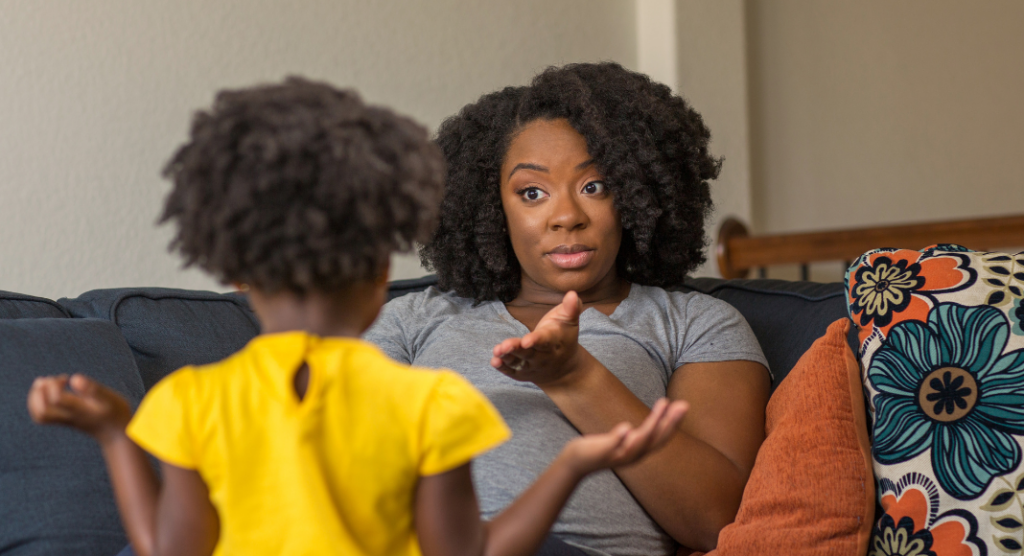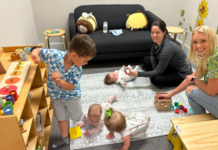 You may have heard of Attachment Parenting. It made a big splash a few years ago, notably on a Time magazine cover “Are You Mom Enough?” with a mom breastfeeding her three-year-old pictured.
You may have heard of Attachment Parenting. It made a big splash a few years ago, notably on a Time magazine cover “Are You Mom Enough?” with a mom breastfeeding her three-year-old pictured.
I’ll admit, I’m became an attachment parent out of sheer laziness. And I’m cheap. And because I could (meaning, generally, these things came relatively easy to me and I have a partner that was supportive and even enthusiastic about them).
Attachment Parenting was coined by Dr. Bob Sears and is all about the “B’s.” There are seven total, but these are the top five: Birth Bonding, Breastfeeding, Babywearing, Bedding close to Baby, and Belief in the language value of your baby’s cry.
The Top Five “B’s” of Attachment Parenting
1. Birth plans
I had birth plans for my children. With my first baby, it pretty much was thrown out the window. But with the second and third babies, they were followed to the letter and I knew I was making informed choices.
2. Breastfeeding
Breastfeeding was, and is important to me, but it also came relatively easily. It is so easy to just whip out a boob (most of the time more discreetly than that sounds), rather than worry about bottles.
I know I’m speaking from a place where I did not have major challenges in this regard. I know it isn’t that simple for many families. I seriously applaud the women who go through it all to make it work (medications, teas, pumping . . . all the things. And even with all those things, it doesn’t always work out.) It not always an easy decision to choose to supplement or switch entirely to formula – but even so – feeding can be a bonding experience with parent and baby, no matter how baby is being fed.
3. Bedding Close to Baby
Co-sleeping wasn’t exactly what I intended when I had my first baby, but it is what got us all the most sleep. I did not intend to be get up out of bed every couple hours to feed my baby. Much easier to just roll over, and offer a boob.
4. Babywearing
I am all for babywearing. In fact, I’m one of several leaders of one of the local babywearing groups – I’m that passionate about it. There is a carrier out there for you, I promise. I started with a Moby wrap, moved to an Ergo . . . and went down the rabbit hole of woven wraps with my second baby. Now, with toddlers and preschoolers, I’m back in the buckle carrier world and loving it.
5. Belief in the language value of your baby’s cry
The crying thing . . . It was obvious to me that I couldn’t just let my baby cry. Clearly something was wrong. And I’ll admit that there were times I had to let my baby cry. For example, in the car, when I was trying to use the bathroom, when dealing with another of my children. But never, ever, did it occur to me that my child was trying to manipulate me. Babies don’t manipulate. They communicate.
Overall, Attachment Parenting is easy. It makes sense.
But babies become boundary testing toddlers, who grow into opinionated preschoolers, who turn into independent kids. As my kids are getting older, I’m finding it much harder to find my Zen. It is easier to fall into the habits and ways I was raised – with spanking, yelling, punishments . . . all the trappings of authoritarian parenting. This method of parenting is a valid choice for many families. But authoritarian parenting felt at odds with how I started my parenting journey. I want to cultivate a relationship with my kids, not blind obedience.
What does that even mean? What does it look like? I’ve joined some Facebook groups – Peaceful Parenting is one – and there are websites: google “peaceful parenting” or “gentle parenting” and you’ll get a whole host of suggestions.
 Peaceful Parenting means…
Peaceful Parenting means…
Time-Ins instead of Time-Outs
For example, after the umpteenth time my five year old had thrown something in the house, and several warnings, I asked him to go to his room. I followed after a minute or two. Usually I find him hiding somewhere in there and either growling at me or sobbing. I coax him out of his hiding spot, we hug, and talk.
If I yelled (this is a fairly frequent occurrence, I’m sorry to say), I start with apologizing for yelling. Explaining why I yelled (I was upset that he was not listening and not being safe). We talk about things we can do instead of yell when we are angry. Then we talk about why he’s there, and how we need to be safe. Usually by this time, he is calm again and the discussion can go entirely off topic. And that’s okay. Time-ins are about reconnecting and developing strategies to help both of us do better.
Talking with your kids about things and through challenges rather than yelling at them. I fail at this most days. Yelling is my Achilles Heel. I’m working on it though, and I think it is important to go back and discuss why I’m yelling with my kids. We both learn and grow from the experience.
Natural Consequences instead of Punishments
It is important they be able to connect the dots of cause and effect. Especially with younger children. With my children, it usually looks like this: they start opening and wasting a particular snack food, and the consequence is that I no longer buy that snack food. Simple. It doesn’t need much emphasis. I don’t feel the need to really drive these lessons home; they are simple and logical, and the consequence works itself out. They don’t get really upset, and we move past the error quickly. Make a mess? consequence: clean it up. This doesn’t have to be approached in an overbearing sort of way.
Peaceful Parenting is hard. While Attachment Parenting felt normal, natural, easy, peaceful parenting is not.
It means constantly admitting I’m wrong and asking my children’s forgiveness. It means being a grown up and acting like one. All the time. Because I have yelled. I have spanked. Because those things come easily. It’s what I know. But neither felt good, almost invariably, they felt wrong. They felt like I was breaking my child’s spirit instead of building them up.
So I apologized. I hugged my kid. I talked about my feelings (anger, frustration, outrage) and that it is wrong to hit. And we move on and try to be better. Even grown ups.
Peaceful parenting challenges quite a lot of what I thought I knew about parenting. I thought children needed strict rules and swift consequences. That they needed to learn that I’m the boss. Turns out . . . not so much.
As they get older, I’m finding that rules do help. But they are simple ones that relate mostly to safety. And the older they get, the more rules they can handle. I’m learning that the most important thing I can do for them to help them be happy is to spend time with them. To connect with them – it only takes a few minutes, but when I remember to do that, I spend a lot less time yelling, and my house stays a lot more peaceful.
It isn’t easy, and I don’t do it alone. It helps to have communities of like minded parents to trouble shoot difficult areas, and a spouse that sees eye-to-eye on things. And even when he might not, he does listen. And we both grow and change and find our own way along this peaceful parenting journey.
Do you prefer Attachment Parenting or Peaceful Parenting?














